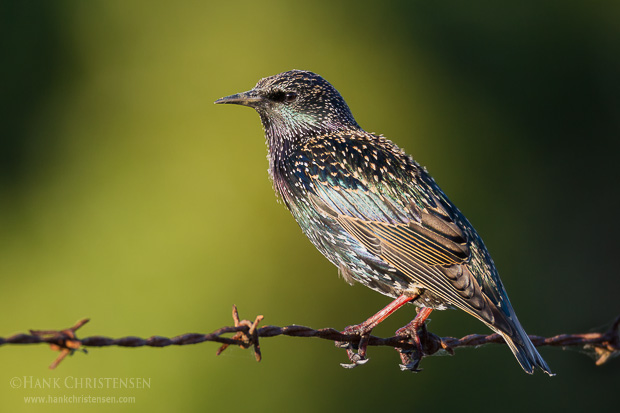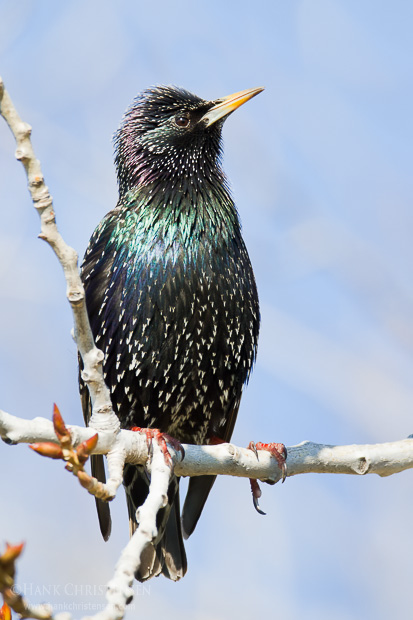
Everywhere I go for bird photography, I see starlings. Sometimes alone, sometimes in huge flocks, these birds are very common throughout much of the world. Here in the US, they are known as European Starlings (as they are native to Eurasia), elsewhere as Common Starlings, and in Europe, simply Starlings.
Because of their ubiquity, they are generally regarded as pests or just ignored by the general population. However, closer inspection reveals a beautiful feather display and a strange and sometimes unbelievable vocalization. Adults have an iridescent black feather coloring, and in winter, it becomes speckled with white flecks. At the right angles of light, the black feathers reflect a glossy green or purple.

They can be excellent mimics, repeating various bird songs and sounds from the environment. Each bird has its own repertoire with more proficient birds having a range of up to 35 variable song types and as many as 14 types of clicks.
Here is a sample vocalization from a common starling:
Taken individually, they can be a quite striking bird. But real amazement comes from their behavior in a flock, or murmuration. Changing speed and direction based on their closest neighbors, they fly as one shape-shifting organism, with the ability to perform a beautiful aerial ballet. A YouTube video gained popularity a few years ago showing off this behavior.
The next time you see one of these birds perched in your neighborhood, take a moment and admire them for the interesting species that they are.
